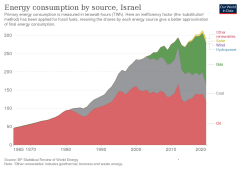Warpspeed
Solar Wizard
The problem with rock bed heat storage is that over time dust, bacteria, fungus and other crap builds up on your rocks, and the circulated air can then become a real health hazard.
This problem also exists with ducted heating and airconditioning, its commonly called "sick building syndrome".
Its usually more economic to demolish and rebuild an older building than to completely strip and replace the entire heating and ventilation ducting system.
I only know personally of one Government funded experimental solar/rock bed heat storage project in a domestic home. A large pit was dug and filled with loose rock below the concrete slab on which the home was built. Hot air from solar collectors was used to heat the rock storage during the day, and at night circulated air air was warmed by the stored heat.
It did not work very well in spring or autumn, and not at all during winter. After about five years (I think it was) people started to come down with various illnesses that were finally traced to bacteria in the air.
This problem also exists with ducted heating and airconditioning, its commonly called "sick building syndrome".
Its usually more economic to demolish and rebuild an older building than to completely strip and replace the entire heating and ventilation ducting system.
I only know personally of one Government funded experimental solar/rock bed heat storage project in a domestic home. A large pit was dug and filled with loose rock below the concrete slab on which the home was built. Hot air from solar collectors was used to heat the rock storage during the day, and at night circulated air air was warmed by the stored heat.
It did not work very well in spring or autumn, and not at all during winter. After about five years (I think it was) people started to come down with various illnesses that were finally traced to bacteria in the air.




